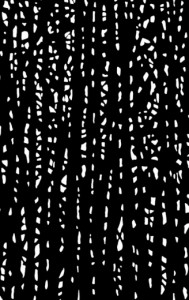Scientific Imagination Run Wild, Part 3
By Nir Menussi: February 11, 2011: Category Inspirations, Networks of Meaning
Integrating Science and Mysticism, Article 6
 We now reach the final aspect of the scientific imagination to discuss, thus concluding our survey of the modern crisis of the enlightenment.
We now reach the final aspect of the scientific imagination to discuss, thus concluding our survey of the modern crisis of the enlightenment.
The Ideas behind Scientific Imagination (Theory within Imagination)
Even images have ideas behind them – the basic notions and concepts underlying them. This is the level of theory within imagination.
One of these ideas was implied in the previous article: that the universe is a closed-up system which cannot be influenced or swayed by any external power. As we said, the roots of this idea lie in ancient Greece, but today an extreme version of it exists, according to which the universe is made only of matter and energy, with no metaphysical level above or beyond it that can influence or direct it.
Another theoretical precept inherent in the scientific imagination has to do with what qualifies as a scientific explanation. There are rigorous (and well-justified) theoretical criteria for this, but there is also something else, a pre-theoretical, preconceived notion of what sort of statement is explanatory. We shall now address two major, and interrelated, components of this notion.
Reductionism vs. Elevationism
It is a basic tenet in modern science—so basic, it goes without saying—that a scientific explanation must be reductive: it must reduce phenomena down to its elementary constituents. Something is deemed as explained—that is, we feel we now know what it is and why it happens—when we are told what elementary particles and processes it is made of.
Now, reductionism is certainly a good thing. I for one am happy to know exactly which germ causes my illness or what my neurons are made of. The problem is the exclusivity of reductionism, the fact that explaining something is identified with discovering its physical ingredients.
A complementary sort of explanation, which was thrown out when reductionism became sole monarch, is the elevationist one. As its name suggests, an elevationist explanation does not reduce things to their material components, but elevates them to a higher level. One degree of elevation is to treat a given phenomenon as a component of larger structures, up to and including the universe as a whole; yet another, more ambitious (and admittedly meta-scientific) degree of elevation is to describe the metaphysical root of the phenomenon – its spiritual parallel of which it is a reflection and approximation.
 A universe in which everything is only built from the bottom up is a universe which feels like it’s constantly on the verge of crumbling, of collapsing back to its building blocks. When it is also constructed from the top down it has something to aspire to and strive towards. Both forms of elevationism breathe life and purpose to a universe which has long since been reduced to dust and ashes.
A universe in which everything is only built from the bottom up is a universe which feels like it’s constantly on the verge of crumbling, of collapsing back to its building blocks. When it is also constructed from the top down it has something to aspire to and strive towards. Both forms of elevationism breathe life and purpose to a universe which has long since been reduced to dust and ashes.
Dulling Occam’s Razor
Another component of the notion of explanation, this time a more clearly stated one, is the principle of Occam’s razor. Simply put, this principle says that when faced with two equally viable explanations for something, the simpler one—that is, the one involving the fewest variables—should always be preferred.
There are several reasons why Occam’s razor is in high favor among scientists, but the main one is simply that it is a very useful principle, narrowing our options down to the most succinct of explanations.
Now, as simple as this reason may sound, it is deeply problematic. How do you define ‘useful’? If ‘useful’ means ‘giving less of a headache to scientists’, then the principle is indeed a successful one. But if one takes into account science’s influence on the general public outside of the laboratories (as discussed at length in article 5), it become quite shaky. The reason is, that Occam’s razor pretty much cuts off anything and everything that is likely to add depth or meaning to the universe. The reason that our current picture of the universe does not contain any element of spirituality in it, or of subjectivity or purpose or aspiration or goal, and so on, is that they were all marked as redundant ‘variables’ and have been shaved clean by Occam’s razor. Though William of Ockham was a devout believer in God, his followers used his razor to kill God. Now, although some may think taking God and spirituality out of the picture is good for the general public too (anti-opium for the masses?), the question at least becomes a highly debatable one.
In order to bring God and mysticism back to the universe we must dull Occam’s razor. The less sharp we make it, the more we can retrieve. This is not to say we should do away with it altogether, or accept any mystical notion there is. We need other razors, designed specifically for use in metaphysics, in order to distinguish, compare and discriminate between different mystical ideas. But the first step is to weaken our grip on this earthly razor. Dulling Occam’s razor would re-open the ceiling hatch of our stifled, closed-up universe to higher worlds and transcendent levels of meaning. It would allow some of the old magic to seep back in, and pave the path towards the unification of science and mysticism.
http://www.interinclusion.org/inspirations/handmaid-and-the-mistress/
Scientific Imagination Run Wild, Part 3,













;)
;)
;)
;)
;)
;)
;)
;)
;)
;)
